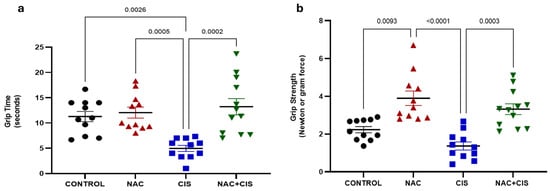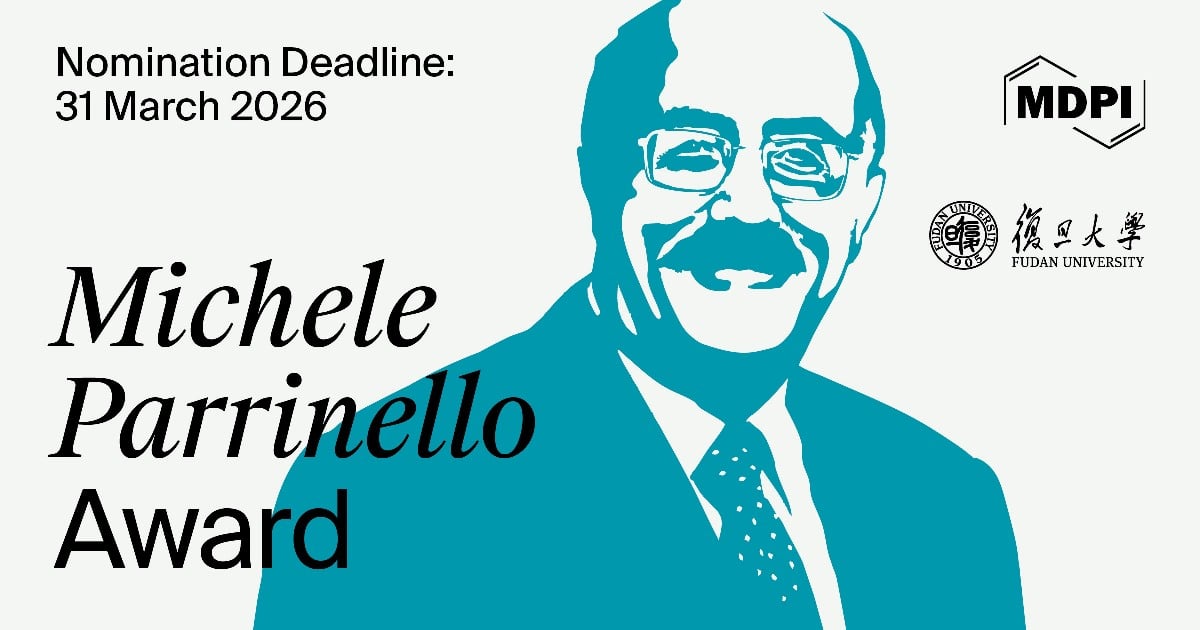-
 Manganese Superoxide Dismutase: Structure, Function, and Implications in Human Disease
Manganese Superoxide Dismutase: Structure, Function, and Implications in Human Disease -
 Oxidative Stress in the Pathophysiology of Chronic Venous Disease
Oxidative Stress in the Pathophysiology of Chronic Venous Disease -
 Inhibitory Infrared Light Restores Mitochondrial Homeostasis in an Oxygen–Glucose Deprivation/Reoxygenation Model
Inhibitory Infrared Light Restores Mitochondrial Homeostasis in an Oxygen–Glucose Deprivation/Reoxygenation Model -
 In Silico and In Vitro Analysis of Synergistic Bioactivities of Morus alba and Pinus densiflora Extracts with Methyl Gallate
In Silico and In Vitro Analysis of Synergistic Bioactivities of Morus alba and Pinus densiflora Extracts with Methyl Gallate
Journal Description
Antioxidants
Antioxidants
is an international, peer-reviewed, open access journal, published monthly online by MDPI. The International Coenzyme Q10 Association (ICQ10A), Israel Society for Oxygen and Free Radical Research (ISOFRR) and European Academy for Molecular Hydrogen Research (EAMHR) are affiliated with Antioxidants and their members receive discounts on the article processing charge.
- Open Access— free for readers, with article processing charges (APC) paid by authors or their institutions.
- High Visibility: indexed within Scopus, SCIE (Web of Science), PubMed, PMC, FSTA, PubAg, CAPlus / SciFinder, and other databases.
- Journal Rank: JCR - Q1 (Chemistry, Medicinal) / CiteScore - Q1 (Food Science)
- Rapid Publication: manuscripts are peer-reviewed and a first decision is provided to authors approximately 17.4 days after submission; acceptance to publication is undertaken in 2.4 days (median values for papers published in this journal in the first half of 2025).
- Recognition of Reviewers: reviewers who provide timely, thorough peer-review reports receive vouchers entitling them to a discount on the APC of their next publication in any MDPI journal, in appreciation of the work done.
- Testimonials: See what our editors and authors say about Antioxidants.
- Companion journal: Oxygen.
Impact Factor:
6.6 (2024);
5-Year Impact Factor:
7.3 (2024)
Latest Articles
N-Acetylcysteine Prevents Skeletal Muscle Cisplatin-Induced Atrophy by Inducing Myogenic microRNAs and Maintaining the Redox Balance
Antioxidants 2025, 14(11), 1344; https://doi.org/10.3390/antiox14111344 (registering DOI) - 8 Nov 2025
Abstract
Cisplatin (CIS) is a widely used chemotherapeutic agent known for its efficacy; however, it induces several adverse effects, most notably cachexia, which is characterized by progressive loss of skeletal muscle mass, weakness, and reduced body weight. N-acetylcysteine (NAC) a compound with antioxidants properties,
[...] Read more.
Cisplatin (CIS) is a widely used chemotherapeutic agent known for its efficacy; however, it induces several adverse effects, most notably cachexia, which is characterized by progressive loss of skeletal muscle mass, weakness, and reduced body weight. N-acetylcysteine (NAC) a compound with antioxidants properties, has been shown to mitigate CIS-induced neurotoxicity in experimental models. This study aimed to investigate the myoprotective effects of NAC during CIS treatment and explore the redox and molecular mechanisms involved in this response. For this, female Wistar rats were divided into four experimental groups: Control, NAC (300 mg/day/8 days), CIS (3 mg/kg i.p for 5 days), and NAC + CIS (NAC for 8 days, with CIS administered from day 4 onward). After treatment, muscle strength, redox status, mitochondrial biogenesis, expression of myogenic microRNAs and morphological changes were evaluated. CIS treatment caused muscle atrophy, decreased GSH/GSSG ratio, impaired cellular function, increased lipid peroxidation and altered antioxidant enzymes activity. These effects were mitigated by NAC coadministration. CIS also reduced the mtDNA/nDNA ratio; however, NAC treatment tended to increase TFAM and PGC-1α expression levels. Furthermore, CIS suppressed the expression of muscular miR-1-3p, miR-133a-3p and miR-206-3p, while NAC restored their levels when co-administered with CIS. These findings suggest that NAC may serve as a promising adjuvant therapeutic strategy to counteract CIS-induced myotoxicity through redox regulation and modulation of molecular pathways related to muscle integrity and regeneration.
Full article
(This article belongs to the Special Issue Role of Skeletal Muscle and Exercise in Oxidative Stress-Related Diseases)
►
Show Figures
Open AccessArticle
Protective Effects of Thyme Leaf Extract Against Particulate Matter-Induced Pulmonary Injury in Mice
by
Jae-Kyoung Lee, Khawaja Muhammad Imran Bashir, Hye-Rim Park, Jin-Gwan Kwon, Beom-Rak Choi, Jae-Suk Choi and Sae-Kwang Ku
Antioxidants 2025, 14(11), 1343; https://doi.org/10.3390/antiox14111343 (registering DOI) - 7 Nov 2025
Abstract
Airborne particulate matter (PM), particularly PM2.5, contributes to pulmonary injury by inducing oxidative stress and inflammation. Thyme (Thymus vulgaris L.) contains bioactive compounds with anti-inflammatory, antioxidant, and expectorant properties. Here, we evaluated the dose-dependent protective effects of thyme extract (TV)
[...] Read more.
Airborne particulate matter (PM), particularly PM2.5, contributes to pulmonary injury by inducing oxidative stress and inflammation. Thyme (Thymus vulgaris L.) contains bioactive compounds with anti-inflammatory, antioxidant, and expectorant properties. Here, we evaluated the dose-dependent protective effects of thyme extract (TV) against PM2.5-induced pulmonary injury in mice, using dexamethasone (DEXA) as a reference anti-inflammatory drug. Subacute pulmonary injury was induced in male Balb/c mice via intranasal administration of PM2.5 (1 mg/kg, twice at 48 h intervals). Mice received oral TV (50, 100, or 200 mg/kg) or DEXA (0.75 mg/kg) daily for 10 days. Assessments included lung weight, serum AST/ALT, bronchoalveolar lavage fluid (BALF) leukocyte counts, cytokines (TNF-α, IL-6), chemokines, oxidative stress markers (ROS, lipid peroxidation, antioxidant enzymes), histopathology, and mRNA expression of genes related to inflammation (PI3K/Akt, MAPK, and NF-κB), mucus production (MUC5AC, MUC5B), and apoptosis (Bcl-2, Bax). Exposure to PM2.5 caused oxidative stress, pulmonary inflammation, mucus hypersecretion, and histopathological changes. TV treatment dose-dependently reduced leukocyte infiltration, cytokine/chemokine release, ROS generation, and mucus overproduction, while enhancing antioxidant defenses and improving tissue pathology. Effects were comparable but slightly less potent than DEXA. Notably, unlike DEXA, TV reduced mucus hyperplasia and enhanced expectorant activity. No hepatotoxicity was observed. These results indicate that thyme extract could serve as a promising natural candidate for alternative respiratory therapeutics or functional food development.
Full article
(This article belongs to the Special Issue Oxidative Stress Induced by Air Pollution, 2nd Edition)
Open AccessArticle
Hydroxyl Radical Scavenging by Aucubin: A Mechanistic Study
by
Kunzhe Jiang, Jingran Wang, Wang Yang, Ying Xiong, Meiling Chen, Qiang Zhou and Yanhong Wang
Antioxidants 2025, 14(11), 1342; https://doi.org/10.3390/antiox14111342 - 7 Nov 2025
Abstract
This study investigates the antioxidant properties of aucubin (AU), an iridoid compound, focusing on its ability to scavenge hydroxyl radicals (•OH) through its hydroxyl functional groups. Gaussian software was employed to model and validate the underlying antioxidant reaction mechanisms. Three primary
[...] Read more.
This study investigates the antioxidant properties of aucubin (AU), an iridoid compound, focusing on its ability to scavenge hydroxyl radicals (•OH) through its hydroxyl functional groups. Gaussian software was employed to model and validate the underlying antioxidant reaction mechanisms. Three primary pathways were examined: hydrogen atom transfer (HAT), sequential electron transfer-proton transfer (SET-PT), and sequential proton loss–electron transfer (SPLET). All calculations were performed using the M06-2X functional within density functional theory (DFT) at the def2-TZVP level, incorporating Grimme’s D3 dispersion correction and the implicit solvation model based on solute electron density (SMD) for water. Various thermodynamic parameters were determined to analyze and compare the antioxidant reactions, including the O-H bond dissociation energy (BDE), ionization potential (IP), proton dissociation enthalpy (PDE), electron transfer enthalpy (ETE), and proton affinity (PA) of the hydroxy groups. The results indicated that the HAT mechanism is the dominant pathway in the scavenging of •OH radicals by AU. The key active sites were identified as the 6-OH group in the aglycone structure and the 6′-OH group in the sugar moiety. Moreover, the polar aqueous environment promoted O-H bond homolysis through hydrogen bonding interactions, thereby enhancing the antioxidant activity, and the polar aqueous environment promoted O-H bond homolysis to enhance the antioxidant activity.
Full article
(This article belongs to the Section Natural and Synthetic Antioxidants)
Open AccessReview
Bioactive Compounds and Antioxidant Potential of Truffles: A Comprehensive Review
by
Sara Baldelli, Gilda Aiello, Alessandra De Bruno, Serena Castelli, Mauro Lombardo, Vilberto Stocchi and Gianluca Tripodi
Antioxidants 2025, 14(11), 1341; https://doi.org/10.3390/antiox14111341 - 7 Nov 2025
Abstract
Truffles are edible symbiotic hypogeal fungi and highly prized worldwide for their unique aroma and rich nutritional profile. Belonging to the order Pezizales and family Tuberaceae, with the genus Tuber being the most notable, truffles contain a diverse array of bioactive compounds including
[...] Read more.
Truffles are edible symbiotic hypogeal fungi and highly prized worldwide for their unique aroma and rich nutritional profile. Belonging to the order Pezizales and family Tuberaceae, with the genus Tuber being the most notable, truffles contain a diverse array of bioactive compounds including phenols, terpenoids, polysaccharides, anandamide, fatty acids, and ergosterols. These compounds contribute to a wide range of biological activities such as antioxidant, antibacterial, anti-inflammatory, hepatoprotective, and anticancer effects. This review comprehensively summarizes current scientific evidence on the biochemical composition, nutritional and aromatic properties, and biological activities of truffles, with special emphasis on their antioxidant and anti-tumor potential. Additionally, factors influencing truffle productivity and quality as well as advanced extraction and storage techniques to preserve bioactivity are discussed, highlighting their potential as valuable functional foods and sources of natural antioxidants.
Full article
(This article belongs to the Special Issue Based on Antioxidant Capacity: The Multifunctional Roles of Bioactive Compounds from Fruits and Vegetables in Precision Nutrition)
►▼
Show Figures
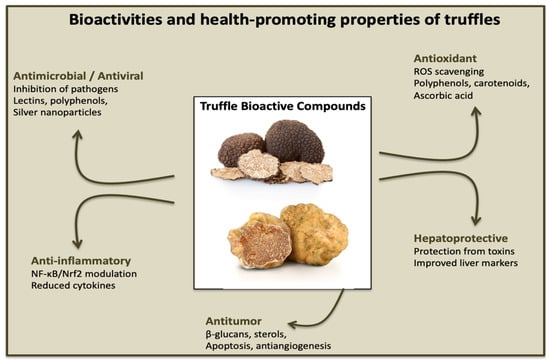
Figure 1
Open AccessReview
Respiratory Ciliary Beat Frequency in COPD: Balancing Oxidative Stress and Pharmacological Treatment
by
Marta Joskova, Vladimira Sadlonova, Daniela Mokra, Ivan Kocan, Martina Sutovska, Karin Kackova and Sona Franova
Antioxidants 2025, 14(11), 1340; https://doi.org/10.3390/antiox14111340 - 6 Nov 2025
Abstract
In chronic obstructive pulmonary disease (COPD), dysregulated calcium homeostasis, oxidative stress, and mucus hypersecretion converge to suppress ciliary beat frequency (CBF), thereby compromising mucociliary clearance (MCC). These mechanisms are subject to pharmacological modulation. Long-acting muscarinic antagonists (LAMAs) exert direct cilia-stimulatory effects and may
[...] Read more.
In chronic obstructive pulmonary disease (COPD), dysregulated calcium homeostasis, oxidative stress, and mucus hypersecretion converge to suppress ciliary beat frequency (CBF), thereby compromising mucociliary clearance (MCC). These mechanisms are subject to pharmacological modulation. Long-acting muscarinic antagonists (LAMAs) exert direct cilia-stimulatory effects and may counteract pathogen-induced mucin overproduction without impairing clearance. Long-acting β2-agonists (LABAs) enhance ciliary activity through the cAMP–PKA–dynein (cyclic adenosine monophosphate–protein kinase A–dynein) signalling pathway. Inhaled corticosteroids (ICSs), although largely neutral on CBF, provide indirect protection by suppressing IL-13–driven inflammation. Phosphodiesterase (PDE)-4 inhibitors sustain intracellular cAMP and promote ciliary motility, though their clinical use remains limited by adverse effects. Emerging evidence suggests that dual and triple therapies may provide additive or synergistic benefits for preserving mucociliary function. Clinically, ex vivo CBF interpretation may be influenced by ongoing pharmacotherapy and tissue sampling site. Nasal brush samples may predominantly reflect systemic rather than inhaled therapy. Moreover, differences in PDE isoform expression between nasal and bronchial epithelium further complicate direct extrapolation of results. Rigorous patient stratification by treatment regimen is therefore essential to reconcile inconsistencies reported across studies. Ultimately, preservation of MCC in COPD depends on a delicate balance between oxidative stress and pharmacological modulation of ciliary function.
Full article
(This article belongs to the Special Issue Oxidative Stress in Respiratory Disorders)
Open AccessArticle
Evaluation of the Anticancer Activity of Medicinal Plants Predominantly Accumulating Ellagic Acid Compounds
by
Domantas Armonavičius, Audrius Maruška, Baltramiejus Jakštys, Mantas Stankevičius, Tomas Drevinskas, Kristina Bimbiraitė-Survilienė, Modesta Čaplikaitė, Hirotaka Ihara, Makoto Takafuji, Elżbieta Skrzydlewska, Ona Ragažinskienė, Yutaka Kuwahara, Shoji Nagaoka, Vilma Kaškonienė, Saulius Šatkauskas and Arvydas Kanopka
Antioxidants 2025, 14(11), 1339; https://doi.org/10.3390/antiox14111339 - 6 Nov 2025
Abstract
Cancer remains a major global health challenge, prompting the search for natural therapeutic agents with selective anticancer activity. This study investigated extracts from 12 medicinal plant species (a total of 21 samples) rich in phenolic compounds, particularly ellagic acid and its derivatives, to
[...] Read more.
Cancer remains a major global health challenge, prompting the search for natural therapeutic agents with selective anticancer activity. This study investigated extracts from 12 medicinal plant species (a total of 21 samples) rich in phenolic compounds, particularly ellagic acid and its derivatives, to evaluate their antioxidant properties and ability to inhibit cancer cell viability. Spectrometric analysis and high-performance liquid chromatography (HPLC) with electrochemical detection (ED) and ultraviolet–visible (UV-VIS) detection were used for compound identification. The anticancer activity of plant extracts was tested using the MTS cell proliferation assay to determine anticancer activity on 4T1, A549, Caki-1, HCT116, and MCF7 cancer cell lines. The HEK-293 healthy cell line was used to determine extracts cytotoxicity. Study results indicate that black walnut (Juglans nigra L.), fireweed (Chamaenerion angustifolium L.), and pedunculate oak (Quercus robur L.) have the highest contents of bioactive compounds. Among tested extracts, fireweed showed the lowest IC50 values, thus the strongest anticancer activity against 4T1 cells (IC50 = 0.28 ± 0.01 RE (rutin equivalents) mg/g), while black walnut was most effective against Caki-1 and HCT116 (IC50 = 1.56 ± 0.01; 2.56 ± 0.02 RE mg/g). IC50 values are reported in rutin equivalents (RE) to maintain consistency with antioxidant normalization parameters used throughout the study. Extended incubation increased anticancer activity across most medicinal plant extracts, with fireweed and Canadian goldenrod demonstrating rapid and sustained potency already at 24 h. After 72 h, the most active fireweed extract inhibited approximately 104–190 million cancer cells per gram of dried plant material, demonstrating substantial antiproliferative activity consistent with the IC50 findings. Importantly, none of the extracts showed cytotoxicity to healthy HEK-293 cells. Overall, the findings highlight several plant species with significant anticancer potential, underscoring their promise as sources of natural bioactive compounds for future cancer prevention and treatment research.
Full article
(This article belongs to the Section Natural and Synthetic Antioxidants)
►▼
Show Figures
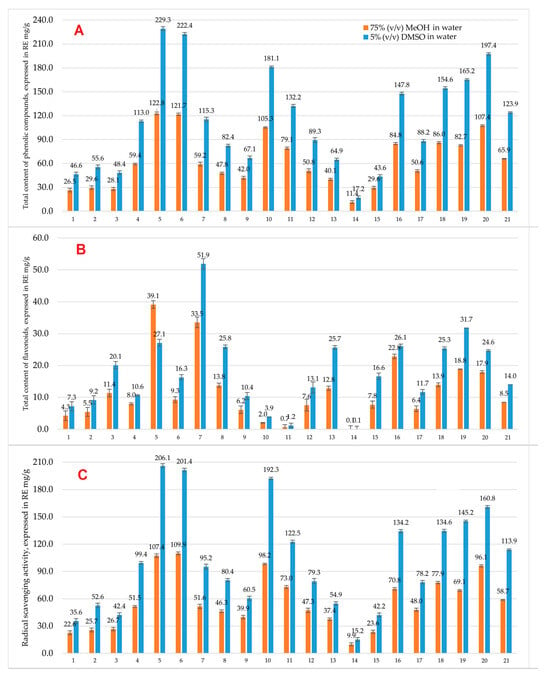
Figure 1
Open AccessReview
Role of Matricellular Proteins in Endothelial Cell Inflammation and Atherosclerosis
by
Ravi Varma Aithabathula, Santosh Kumar and Bhupesh Singla
Antioxidants 2025, 14(11), 1338; https://doi.org/10.3390/antiox14111338 - 6 Nov 2025
Abstract
The vascular endothelium serves as a critical barrier preventing the transmigration of monocytes, circulating lipoproteins, and other molecules into the subendothelial space, and plays a vital role in regulating vascular tone. A dysfunctional and inflamed endothelial layer in response to disturbed blood flow
[...] Read more.
The vascular endothelium serves as a critical barrier preventing the transmigration of monocytes, circulating lipoproteins, and other molecules into the subendothelial space, and plays a vital role in regulating vascular tone. A dysfunctional and inflamed endothelial layer in response to disturbed blood flow or other proatherogenic risk factors is the initiating event in the pathogenesis of atherosclerosis, suggesting the importance of an intact and properly functioning endothelium in preventing the onset and progression of this disease. Accumulated evidence demonstrates the significant role of matricellular proteins, which are non-structural and secretory extracellular matrix (ECM) proteins, in the development of atherosclerosis. These proteins exert multifaceted effects on endothelial cells (ECs) ranging from reactive oxygen species (ROS) production, endoplasmic reticulum stress, and expression of adhesion molecules to autophagy and compromised barrier function via stimulating various molecular mechanisms. Given the critical roles of these processes in EC function and atherosclerosis, a better understanding of signaling pathways governed by matricellular proteins in ECs is required to develop therapeutic strategies for suppressing or preventing atherosclerosis and related cardiovascular diseases (CVDs). This review comprehensively summarizes the existing literature on the diverse roles of matricellular proteins in regulating EC inflammation and function, and highlights their potential as viable therapeutic targets for maintaining vascular health and inhibiting the progression of atherosclerosis.
Full article
(This article belongs to the Topic Oxidative Stress and Inflammation, 3rd Edition)
►▼
Show Figures
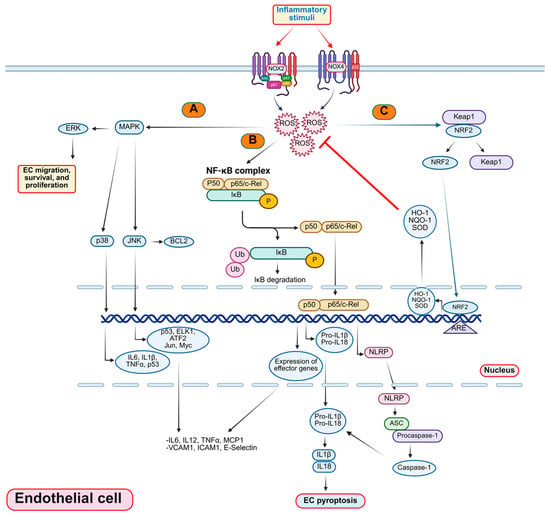
Figure 1
Open AccessArticle
New Insights into Potential Anti-Aging and Fatigue Effects of a Dietary Supplement from the Resveratrol Beverage in Aged SAMP8 Mice
by
Yu-Chien Chen, Ming-Yu Chou, Po-Hsien Li, Ying-Shen Lin, Mei-Due Yang, Ching-Hsin Chi, Ping-Hsiu Huang, Yun-Jhen Wei, Ming-Fu Wang and Chun-Yen Kuo
Antioxidants 2025, 14(11), 1337; https://doi.org/10.3390/antiox14111337 - 6 Nov 2025
Abstract
This study investigated the anti-fatigue and anti-aging benefits of continuous intake of resveratrol (RES)-rich beverages. Locomotion and forelimb grip strength performance were significantly improved in medium- and high-dose RES groups. In terms of aging indices, the scores for the medium- and high-dose groups
[...] Read more.
This study investigated the anti-fatigue and anti-aging benefits of continuous intake of resveratrol (RES)-rich beverages. Locomotion and forelimb grip strength performance were significantly improved in medium- and high-dose RES groups. In terms of aging indices, the scores for the medium- and high-dose groups were significantly lower than those of the control group. In the PAT and active shuttle avoidance tests, the three RES groups performed better than the control group. A significant increase in SOD and catalase activity in the liver and a reduction in TBARS and 8-OHdG levels in the brain were observed in the medium- and high-dose groups. Thus, supplementation with RES-rich beverages for 13 weeks significantly improved fatigue, locomotor performance, learning and memory abilities, and liver antioxidant activity and reduced brain peroxide levels in SAMP8 mice.
Full article
(This article belongs to the Special Issue The Use of Antioxidant-Rich Foods and Supplements in Disease Prevention)
►▼
Show Figures

Graphical abstract
Open AccessArticle
Sesame Meal: The Ideal Alternative to Soybean Meal for Fattening Beef Cattle—Reducing Nitrogen Excretion and Bolstering Antioxidant Defenses
by
Shengnan Min, Yingqi Li, Changxiao Shi, Huili Wang, Hongliang Zhang, Shuo Zhang, Yawen Luo, Yan Lu, Yang He, Binghai Cao and Huawei Su
Antioxidants 2025, 14(11), 1336; https://doi.org/10.3390/antiox14111336 - 6 Nov 2025
Abstract
►▼
Show Figures
Sesame meal possesses high crude protein content (40–50%), abundant methionine, and natural antioxidant components such as lignan compounds, making it a high-quality feed alternative to soybean meal in ruminant production. This study systematically evaluated the effects of completely replacing soybean meal with sesame
[...] Read more.
Sesame meal possesses high crude protein content (40–50%), abundant methionine, and natural antioxidant components such as lignan compounds, making it a high-quality feed alternative to soybean meal in ruminant production. This study systematically evaluated the effects of completely replacing soybean meal with sesame meal in the diet on growth performance, serum biochemistry, antioxidant activity, rumen fermentation parameters, and microbial composition in finishing beef cattle. The trial employed a completely randomised design, selecting 18 Angus bulls with similar initial body weights (566.7 ± 38.1 kg). Animals were randomly assigned to the SBM group (n = 9) and SSM group (n = 9), with a 7-day pre-trial period followed by a 96-day main trial period. Results indicate that replacing soybean meal with sesame meal significantly enhances the antioxidant capacity of fattening beef cattle. Catalase (CAT) activity markedly increased (p < 0.05), while glutathione peroxidase activity showed an upward trend (0.05 < p < 0.1). This improvement was accompanied by a substantial shift in rumen microbial composition, highlighted by a marked enrichment of beneficial bacteria including p_Verrucomicrobiota, p_Spirochaetota, g_CAG_352, norank_f_Lachnospiraceae, and g_Rikenellaceae_RC9_gut_group, which collectively contributed to greater microbial complexity and stability. Regarding nitrogen metabolism, urinary nitrogen and serum urea nitrogen levels were significantly reduced in the sesame meal group (p < 0.05), indicating improved nitrogen utilization efficiency. Overall, completely replacing soybean meal with sesame meal in the diet of finishing beef cattle did not adversely affect growth and slaughter performance. It simultaneously significantly enhanced antioxidant capacity, reduced urinary nitrogen excretion, and lowered feed costs. These findings underscore the potential of sesame meal as a sustainable, nutritionally advantageous alternative for optimising beef cattle diets.
Full article

Figure 1
Open AccessArticle
Innovative Plant-Based Nutraceuticals: Enhancing Iron Bioavailability to Address Iron Deficiency Anaemia
by
Nemanja Živanović, Vesna Mijatović Jovin, Bojana Andrejić Višnjić, Diandra Pintać Šarac, Danica Ćujić, Nataša Simin and Marija Lesjak
Antioxidants 2025, 14(11), 1335; https://doi.org/10.3390/antiox14111335 - 5 Nov 2025
Abstract
Iron deficiency anaemia (IDA) affects 25% of the global population, with detrimental effects on the health of women and children. Treatments with iron supplements offer temporary relief but often yield adverse effects, hindering patient adherence. Additionally, IDA is associated with oxidative stress, which
[...] Read more.
Iron deficiency anaemia (IDA) affects 25% of the global population, with detrimental effects on the health of women and children. Treatments with iron supplements offer temporary relief but often yield adverse effects, hindering patient adherence. Additionally, IDA is associated with oxidative stress, which becomes significantly exacerbated during iron supplementation. Our study aimed to address this challenge by developing a plant-based nutritional formula rich in bioavailable iron and antioxidants devoid of adverse effects. Chemical analysis of edible plants, focused on the content of iron and iron absorption inhibitors, guided formula development. In vivo studies on rats with IDA evaluated iron bioavailability from the formulated plant-based nutraceuticals. Results of animal studies showed significant improvements in IDA-associated blood parameters after 28 days of oral administration of the nutraceuticals. Additionally, the nutraceuticals did not impede the benefits of iron supplementation. These findings strongly indicate that plant-based nutraceuticals can serve as an effective source of bioavailable iron, potentially improving treatment adherence and at the same time aligning with ongoing WHO and UNICEF initiatives to enhance IDA management.
Full article
(This article belongs to the Special Issue Antioxidant Compounds and Health Benefits of Mediterranean Functional Food)
►▼
Show Figures
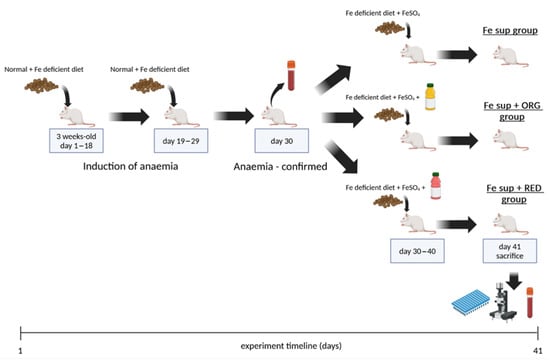
Figure 1
Open AccessArticle
Microencapsulation Enhances the Biological Potential, Bioaccessibility, and Intracellular Oxidative Status of Guava Phenolic Extracts
by
Renan Danielski, Sarika Kumari, Pavan Kumar Kakumani and Fereidoon Shahidi
Antioxidants 2025, 14(11), 1334; https://doi.org/10.3390/antiox14111334 - 5 Nov 2025
Abstract
Guava fruit is widely consumed in tropical countries and beyond. The phenolic fraction of guava pulp and processing waste (a single fraction containing seeds, skins, and pulp residues) have been reported to carry in vitro biological activities, acting on biomarkers of metabolic diseases
[...] Read more.
Guava fruit is widely consumed in tropical countries and beyond. The phenolic fraction of guava pulp and processing waste (a single fraction containing seeds, skins, and pulp residues) have been reported to carry in vitro biological activities, acting on biomarkers of metabolic diseases such as type 2 diabetes and obesity (enzymatic inhibition of α-glucosidase and pancreatic lipase), atherosclerosis (mitigation of LDL-cholesterol oxidation), and mutagenesis (suppression of DNA strand scission). However, such bioactivities may be compromised by the exposure of guava phenolics to the harsh conditions found along the human gastrointestinal (GI) tract. To overcome this limitation, guava phenolic extracts were microencapsulated with maltodextrin through freeze-drying. The effect of crude and microencapsulated extracts on biomarkers of metabolic diseases was compared before and after in vitro simulated GI digestion. Moreover, guava waste extracts were tested for their ability to interfere with the intracellular redox status of Caco-2 and HeLa cells incubated with free radicals. Microencapsulation considerably improved the bioaccessibility of guava phenolics across digestion stages, which reflected on the enhancement of most bioactivities measured, with the exception of pancreatic lipase inhibition (both pulp and waste extracts) and LDL oxidative protection (pulp extract). Meanwhile, microencapsulation accentuated intracellular antioxidant activity in Caco-2 cells induced by guava waste extract whereas a prooxidant effect in HeLa cells was intensified. This highlights the selectivity of the same extract toward different cell lines. Overall, microencapsulation was demonstrated as a promising tool for protecting and even enhancing the nutraceutical power of guava phenolics, reinforcing their relevance in the development of functional foods and nutraceutical products.
Full article
(This article belongs to the Special Issue Phenolic Antioxidants—2nd Edition)
►▼
Show Figures
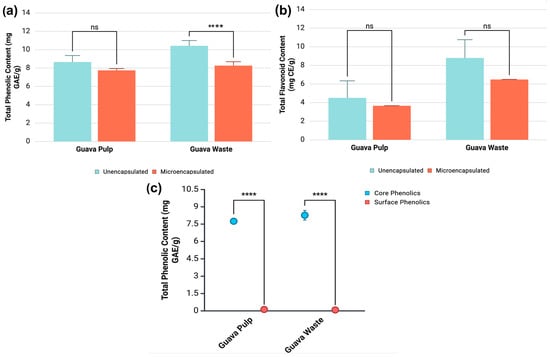
Figure 1
Open AccessArticle
Comparative Effects of Selenium Yeast and Sodium Selenite on the Selenium Distribution, Interior Quality and Oxidative Stability of Docosahexaenoic Acid-Enriched Eggs During Storage
by
Chenhao Zou, Chaoyue Ge, Yujie Lv, Weichen Huang, Shenao Zhan, Xinyu Shen, Hongmeng Yuan, Xiaoxu Wang, Lianchi Wu, Dongyou Yu and Bing Liu
Antioxidants 2025, 14(11), 1333; https://doi.org/10.3390/antiox14111333 - 5 Nov 2025
Abstract
Docosahexaenoic acid (DHA)-enriched eggs are nutritionally valuable for human cardiovascular health and neurodevelopment but face severe lipid oxidation during storage due to DHA’s high degree of unsaturation, which reduces their quality and shelf life. Selenium (Se) mitigates such oxidation, yet the efficacy of
[...] Read more.
Docosahexaenoic acid (DHA)-enriched eggs are nutritionally valuable for human cardiovascular health and neurodevelopment but face severe lipid oxidation during storage due to DHA’s high degree of unsaturation, which reduces their quality and shelf life. Selenium (Se) mitigates such oxidation, yet the efficacy of different Se sources (organic vs. inorganic) in DHA-enriched eggs remains inadequately quantified. This study investigated the effects of dietary Se sources on Se distribution, internal quality, and oxidative stability of DHA-enriched eggs by feeding 360 Hy-line Brown laying hens (50 weeks old) four diets for 8 weeks: a basal diet (CON; analyzed Se: 0.10 mg/kg), a DHA-enriched microalgae diet (MA; analyzed Se: 0.11 mg/kg), or MA supplemented with 0.25 mg/kg Se as sodium selenite (MA + SS) or selenium yeast (MA + SY). At the end of the feeding trial, eggs were collected and stored at 22 °C for 0, 15, or 30 days to evaluate internal quality and oxidative stability. Results showed that SY was significantly more effective than SS in enriching Se in eggs: the total Se content in whole eggs of MA + SY (18.82 mg) was 39.6% higher than that of MA + SS (13.48 mg), with albumen Se content in MA + SY (0.239 mg/kg) being 2.17-fold that of MA + SS (0.110 mg/kg). Supplementation with DHA alone (MA diet) negatively impacted stored egg quality: at 30 days of storage, the Haugh unit (HU) of MA (54.93) was 10.6% lower than that of CON (61.48), and yolk thiobarbituric acid-reactive substances (TBARSs, 495.8 μg MDA/kg) was 22.9% higher than that of CON (403.3 μg MDA/kg). However, both Se sources improved these parameters, with SY showing a more pronounced effect: at 30 days, MA + SY had a higher yolk GPX activity (58.10 U/g protein, 12.1% higher than MA + SS) and lower yolk TBARSs (361.2 μg MDA/kg, 11.6% lower than MA + SS), while its HU (62.97) was restored to 99.2% of CON’s level. The superior efficacy of SY was attributed to greater Se deposition and enhanced GPX activity, which jointly reduced lipid and protein oxidation. These findings confirm SY as the preferred Se supplement for producing nutritionally enhanced DHA-enriched eggs with improved storage stability.
Full article
(This article belongs to the Section Health Outcomes of Antioxidants and Oxidative Stress)
►▼
Show Figures
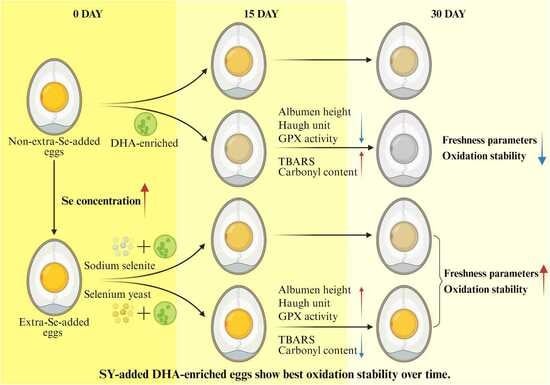
Graphical abstract
Open AccessArticle
Microbial Biotransformation of Agro-Industrial Fibre-Rich By-Products into Functional Beverages
by
Pau Sentís-Moré, Ivan Robles-Rodríguez, Kevin Leonard, Job Tchoumtchoua, Xavier Escoté-Miró, Josep M. del Bas-Prior and Nàdia Ortega-Olivé
Antioxidants 2025, 14(11), 1332; https://doi.org/10.3390/antiox14111332 - 5 Nov 2025
Abstract
This study explores the development of functional fermented beverages using fibre-rich residues derived from olive pruning, vineyard pruning, chicory root, and red onion, obtained after subcritical water extraction of polyphenols. Two microbial strains, Lactiplantibacillus plantarum and Bacillus subtilis, were evaluated for their fermentation
[...] Read more.
This study explores the development of functional fermented beverages using fibre-rich residues derived from olive pruning, vineyard pruning, chicory root, and red onion, obtained after subcritical water extraction of polyphenols. Two microbial strains, Lactiplantibacillus plantarum and Bacillus subtilis, were evaluated for their fermentation performance across different fibre matrices, with and without sugar supplementation. Key parameters including microbial growth, pH evolution, and reducing sugar content were monitored, and Lactiplantibacillus plantarum showed superior acidification and viability (>9 log CFU/mL), especially in sugar-enriched formulations, while Bacillus subtilis showed a limited performance. Based on fermentation efficiency, three sugar-supplemented formulations were selected to scale-up: olive pruning fibre and vineyard pruning fibre fermented with Lactiplantibacillus plantarum and olive pruning fibre fermented with Bacillus subtilis. Red onion fibre extract was excluded from scale-up experiments due to its high viscosity, which made it impossible to measure reducing sugars, consistent with its high water-holding capacity. Fermentation significantly increased antioxidant capacity, reaching up to 750 µmol Trolox equivalents/L and 18 mg of gallic acid equivalents/L in L. plantarum-fermented samples, confirming microbial release of bound phenolics and formation of bioactive metabolites. The resulting beverages were microbiologically stable (final pH < 4.5), sensorially acceptable, and potentially antioxidant-rich, supporting their role in sustainable food system development and circular bioeconomy.
Full article
(This article belongs to the Special Issue Natural Antioxidants in Functional Foods)
►▼
Show Figures

Figure 1
Open AccessArticle
Comparative Evaluation of Functional Properties of Cow, Goat, and Donkey Milks Fermented with Lactic Acid Bacteria
by
Giusy Rita Caponio, Alessandro Annunziato, Mirco Vacca, Mariasimona Cavaliere, Ilenia Ceglie, Marianna Ranieri, Alessio Di Luca, Angela Gabriella D’Alessandro, Grazia Tamma and Maria De Angelis
Antioxidants 2025, 14(11), 1331; https://doi.org/10.3390/antiox14111331 - 5 Nov 2025
Abstract
Milk represents not only a source of essential nutrients but also a versatile matrix for the development of functional foods when combined with lactic acid bacteria (LAB) fermentation. While cow milk is the most widely consumed, alternative matrices such as goat and donkey
[...] Read more.
Milk represents not only a source of essential nutrients but also a versatile matrix for the development of functional foods when combined with lactic acid bacteria (LAB) fermentation. While cow milk is the most widely consumed, alternative matrices such as goat and donkey milk possess distinctive compositional features that may influence the bioactivity of fermented products. In this work, fifteen different strains belonging to LAB and bifidobacteria were initially tested for their ability to ferment cow, goat, and donkey milk. Fermented samples showing the best acidification rate were further screened for total phenolic content (TPC), radical scavenging activity (RSA), and effects in human colon epithelial cells and Caco-2 adenocarcinoma cells. The results showed that fermentation modulated TPC in a strain- and matrix-dependent manner, with donkey milk showing the most consistent increases. RSA was significantly enhanced in fermented samples, particularly those inoculated with Lacticaseibacillus casei BGP93 and LC4P1 strains and Limosilactobacillus reuteri ATCC23272. Cell viability assays confirmed the absence of cytotoxicity, and fermented milk extracts reduced ROS under induced oxidative stress. Antimicrobial assay showed that Lactiplantibacillus plantarum LPAL selectively inhibited Listeria monocytogenes, with the strongest effect observed in donkey milk. These findings suggest that LAB-fermented milks from goats and donkeys may represent safe functional foods with improved antioxidant and antimicrobial activities.
Full article
(This article belongs to the Special Issue Natural Antioxidants in Functional Foods)
►▼
Show Figures

Figure 1
Open AccessArticle
Sustainable Fertilization with Ramial Chipped Wood Enhances Antioxidant Profiles in Tomato Varieties: An Untargeted Metabolomics Approach
by
Mohamed M. Abuhabib, Clara Abarca-Rivas, Julián Lozano-Castellón, Anna Vallverdú-Queralt, Johana González-Coria, Sebastian T. Soukup, Rosa M. Lamuela-Raventós, Maria Pérez and Joan Romanyà
Antioxidants 2025, 14(11), 1330; https://doi.org/10.3390/antiox14111330 - 5 Nov 2025
Abstract
Tomatoes are among the most consumed vegetables within the Mediterranean diet, recognized as one of the healthiest dietary patterns in the world. This study evaluated the effects of four fertilization treatments on the antioxidant and metabolic profiles of four local tomato varieties: Cornabel
[...] Read more.
Tomatoes are among the most consumed vegetables within the Mediterranean diet, recognized as one of the healthiest dietary patterns in the world. This study evaluated the effects of four fertilization treatments on the antioxidant and metabolic profiles of four local tomato varieties: Cornabel (V1), Cuban Pepper (V2), Corno Andino (V3), and Roli Rosa (V4). Treatment 1 (T1) used 1.28 kg/m2 of commercial woody compost (C/N ratio 13), while Treatment 2 (T2) served as the control, initially without fertilization. Treatments 3 and 4 (T3, T4) incorporated ramial chipped wood (RCW) at 15 kg/m2 and 7.5 kg/m2, respectively, without tillage. Each treatment × variety combination included four biological replicates (n = 4). Untargeted metabolomic profiling via UHPLC-QToF and statistical analyses identified 163 compounds, 37 of which showed significant varietal differences (p < 0.05). The flavonoid eriodictyol was more abundant in the Pebroter varieties (V1, V2, V3), whereas luteolin-8-O-glucoside (orientin) predominated in V4, likely due to differential expression of biosynthetic genes. RCW (T3) yielded higher levels of antioxidant compounds like phenolic acids, and flavonoids compared to compost and control; however, no dose–response was observed using different doses of RCW (T3 and T4). These findings demonstrate that RCW may modulate the antioxidant metabolite profile of tomatoes, highlighting its potential as a sustainable fertilization strategy for enhancing antioxidant compounds.
Full article
(This article belongs to the Special Issue Antioxidants from Sustainable Food Sources)
►▼
Show Figures

Figure 1
Open AccessEditorial
New Strategies in Preventing Inflammatory and/or Oxidative Stress-Induced Damages in Ischemia–Reperfusion Injury (2nd Edition)
by
Borja Herrero de la Parte, Ignacio García-Alonso and Ana Alonso-Varona
Antioxidants 2025, 14(11), 1329; https://doi.org/10.3390/antiox14111329 - 5 Nov 2025
Abstract
Ischemia–reperfusion injury remains one of the most fascinating and challenging paradoxes in modern biomedicine [...]
Full article
(This article belongs to the Special Issue New Strategies in Preventing Inflammatory and/or Oxidative Stress-Induced Damages in Ischemia-Reperfusion Injury, 2nd Edition)
Open AccessArticle
Vitamin K3 Analog Phthiocol Protects Against High Phosphate-Induced Vascular Calcification in Chronic Kidney Disease
by
Tsung-Jui Wu, Yi-Cheng Wang, Chia-Wen Lu, Chung-Jen Lee and Bang-Gee Hsu
Antioxidants 2025, 14(11), 1328; https://doi.org/10.3390/antiox14111328 - 4 Nov 2025
Abstract
Vascular calcification (VC) is a multifactorial pathological deposition of calcium in the vasculature and is associated with severe cardiovascular outcomes, particularly in patients with chronic kidney disease (CKD). Various vitamin K analogs have been found to influence the development of VC. We utilized
[...] Read more.
Vascular calcification (VC) is a multifactorial pathological deposition of calcium in the vasculature and is associated with severe cardiovascular outcomes, particularly in patients with chronic kidney disease (CKD). Various vitamin K analogs have been found to influence the development of VC. We utilized a high-phosphate-induced VC model in mouse vascular smooth muscle cells (VSMCs) and developed an in vivo VC model using ApoE−/− mice subjected to 5/6 nephrectomy and fed an oral high-phosphorus diet to evaluate the effect of the vitamin K3 analog phthiocol. Transdermal glomerular filtration rate measurement, pulse wave velocity for aortic stiffness assessment, blood biochemical analysis, and pathological examinations were conducted. Phthiocol suppressed reactive oxygen species production and reduced subsequent cell death and calcification in a dose-dependent manner. It inhibited osteogenic trans-differentiation by restoring the PI3K/Akt pathway, activating Nrf2/HO-1 antioxidation signaling, and downregulating IL-1β and TNF-α. The high-phosphate diet in ApoE−/− CKD mice significantly induced dyslipidemia, renal impairment, hyperphosphatemia, aortic stiffness, and calcium deposition in aortic tissue compared to the control group. Phthiocol treatment markedly improved dyslipidemia, hyperphosphatemia, and aortic stiffness. The vitamin K3 analog phthiocol ameliorates phosphate-induced osteogenic trans-differentiation of VSMCs and subsequent VC by restoring the PI3K/Akt pathway and enhancing Nrf2/HO-1 antioxidant activity.
Full article
(This article belongs to the Special Issue Nrf2 and Cardiovascular Function, Diseases, and Therapeutic Targets)
►▼
Show Figures
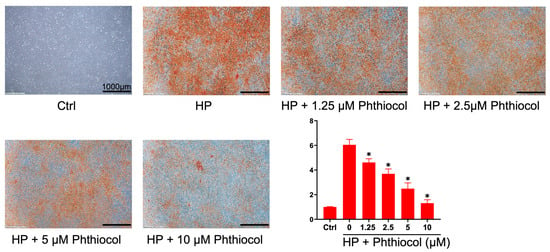
Figure 1
Open AccessArticle
Dietary Methionine Regulates Hepatic Autophagy and Apoptosis via m6A Methylation in Juvenile Megalobrama amblycephala
by
Qianwen Sun, Linjie Qian, Chuntao Xue, Qiushuang Ren, Wenqiang Jiang, Yan Lin, Siyue Lu, Zhengyan Gu and Linghong Miao
Antioxidants 2025, 14(11), 1327; https://doi.org/10.3390/antiox14111327 - 3 Nov 2025
Abstract
This study investigated the epigenetic mechanisms through which graded levels of dietary methionine (Met) regulates growth, muscle quality, and health in juvenile Megalobrama amblycephala fed an all-plant-protein diet. Dietary Met supplementation improved growth performance in a dose-dependent manner and enhanced muscle nutritional quality,
[...] Read more.
This study investigated the epigenetic mechanisms through which graded levels of dietary methionine (Met) regulates growth, muscle quality, and health in juvenile Megalobrama amblycephala fed an all-plant-protein diet. Dietary Met supplementation improved growth performance in a dose-dependent manner and enhanced muscle nutritional quality, particularly protein content and amino acid composition. Optimal Met intake also strengthened hepatic antioxidant defenses, stabilized mitochondrial function, and modulated plasma metabolite profiles, including metabolites associated with antioxidant, anti-inflammatory, and antimicrobial activity. Epigenetic analysis revealed that dietary Met influenced hepatic N6-methyladenosine (m6A) RNA methylation and the expression of genes involved in autophagy and apoptosis, suggesting that these molecular pathways contribute to the observed physiological benefits. Collectively, these findings indicate that appropriate dietary Met of 10.1 g/kg not only supports growth and nutrient utilization but also promotes metabolic and cellular homeostasis through epigenetic regulation. This work provides novel insights into the nutritional and molecular strategies for improving the health and performance of juvenile M. amblycephala under plant-based feeding regimes, with potential implications for sustainable aquaculture practices.
Full article
(This article belongs to the Special Issue Natural Antioxidants and Aquatic Animal Health—2nd Edition)
►▼
Show Figures
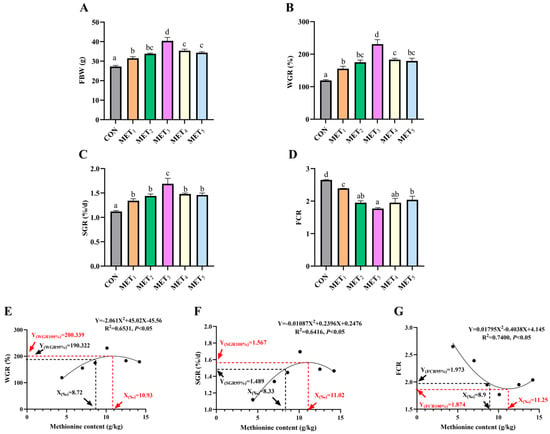
Figure 1
Open AccessReview
Bilirubin Hepatic and Intestinal Transport and Catabolism: Physiology, Pathophysiology, and Benefits
by
Zachary A. Kipp, Sally N. Pauss, Genesee J. Martinez, Terry D. Hinds, Jr. and Wang-Hsin Lee
Antioxidants 2025, 14(11), 1326; https://doi.org/10.3390/antiox14111326 - 3 Nov 2025
Abstract
Bilirubin, a metabolite derived from heme degradation, has traditionally been regarded as a waste product and a marker of liver injury. However, increasing evidence suggests that bilirubin also functions as a hormone, and reduced levels are associated with metabolic dysfunction. Studies have shown
[...] Read more.
Bilirubin, a metabolite derived from heme degradation, has traditionally been regarded as a waste product and a marker of liver injury. However, increasing evidence suggests that bilirubin also functions as a hormone, and reduced levels are associated with metabolic dysfunction. Studies have shown a strong association between low circulating bilirubin levels and an increased risk of metabolic disorders and cardiovascular disease. To advance bilirubin-based treatment strategies, it is essential to elucidate the mechanisms underlying bilirubin transport and metabolism. Therefore, we provide an in-depth discussion of bilirubin production and its subsequent fates, with a particular focus on the transport between the liver and the intestine. We describe the molecular players involved in heme degradation and biliverdin formation, leading to bilirubin production, followed by its transport from the bloodstream to hepatocytes and from the liver to the intestine. We discuss intestinal bilirubin catabolism, including the microbiome generation of urobilinogen, urobilin, and other metabolites. Finally, we discuss how bilirubin clearance and catabolism intersect with its metabolic effects, highlighting potential therapeutic targets. By integrating these aspects, this review provides a comprehensive understanding of bilirubin’s physiological importance, intestinal transport, and breakdown, as well as insights into novel strategies for treating hypobilirubinemia-associated disorders.
Full article
(This article belongs to the Special Issue Novel Strategies for Oxidative Stress Management: Dietary Interventions for Liver and Gut Health)
►▼
Show Figures

Figure 1
Open AccessArticle
Dietary Supplementation with Chenodeoxycholic Acid or Ursodeoxycholic Acid Modulates Growth, Thyroid Status, and Hepatopancreatic–Intestinal Health in Juvenile Little Yellow Croaker Larimichthys polyactis
by
Rui Wu, Limin Yan, Yao Li, Ting Ye, Yu Zhang, Wei Zhan, Chenglong Wu, Bo Lou and Xiao Liang
Antioxidants 2025, 14(11), 1325; https://doi.org/10.3390/antiox14111325 - 3 Nov 2025
Abstract
Commercial feeds formulated for Larimichthys crocea are commonly used in intensive farming of Larimichthys polyactis; however, their nutritional composition is suboptimal for the latter. The study evaluated the effects of dietary chenodeoxycholic acid (CDCA) and ursodeoxycholic acid (UDCA) supplementation on mitigating nutritional
[...] Read more.
Commercial feeds formulated for Larimichthys crocea are commonly used in intensive farming of Larimichthys polyactis; however, their nutritional composition is suboptimal for the latter. The study evaluated the effects of dietary chenodeoxycholic acid (CDCA) and ursodeoxycholic acid (UDCA) supplementation on mitigating nutritional mismatch-induced growth retardation and hepatopancreatic–intestinal metabolic disorders in L. polyactis. Fish were fed seven feeds: a commercial feed (control) and feeds supplemented with 300, 600, and 1200 mg/kg of CDCA or UDCA. Results showed that both bile acids (BAs) supplementation improved growth, altered thyroid hormone metabolism, with significant changes in hepatopancreatic–intestinal types of deiodination. Both BAs increased hepatopancreatic energy metabolism and cholic acid synthesis, while inducing hepatopancreatic oxidative damage. Notably, 300 mg/kg CDCA and 600 mg/kg UDCA significantly reduced hepatopancreatic vacuolation and lipid accumulation, which was associated with enhanced protease and lipase activities (p < 0.05). Dietary both BAs supplementation enhanced intestinal antioxidant capacity, but contributed to the inflammation, with 300 mg/kg UDCA improving intestinal mucosal morphology (p < 0.05). These findings suggest that supplementation with dietary 300 mg/kg CDCA, 300 and 600 mg/kg UDCA could alleviate growth restriction and liver–intestinal structural damage caused by nutritional mismatch, reduce hepatic fat accumulation, and enhance intestinal antioxidant capacity of L. polyactis.
Full article
(This article belongs to the Special Issue Natural Antioxidants and Aquatic Animal Health—2nd Edition)
►▼
Show Figures

Figure 1

Journal Menu
► ▼ Journal Menu-
- Antioxidants Home
- Aims & Scope
- Editorial Board
- Reviewer Board
- Topical Advisory Panel
- Instructions for Authors
- Special Issues
- Topics
- Sections & Collections
- Article Processing Charge
- Indexing & Archiving
- Editor’s Choice Articles
- Most Cited & Viewed
- Journal Statistics
- Journal History
- Journal Awards
- Society Collaborations
- Conferences
- Editorial Office
Journal Browser
► ▼ Journal BrowserHighly Accessed Articles
Latest Books
E-Mail Alert
News
Topics
Topic in
Biomolecules, Cancers, IJMS, Nutrients, Antioxidants
Advances in Adiponectin
Topic Editors: Puran S. Bora, Mayank ChoubeyDeadline: 24 November 2025
Topic in
Antioxidants, Chemistry, IJMS, Molecules, Pharmaceutics
Natural Bioactive Compounds as a Promising Approach to Mitigating Oxidative Stress
Topic Editors: Andrea Ragusa, Filomena CorboDeadline: 31 December 2025
Topic in
Antioxidants, Cancers, Gastroenterology Insights, Life, Nutrients
Oxidative Stress and Diet: The Health Implications of Advanced Glycation and Lipid Oxidation End-Products
Topic Editors: Joseph Kanner, Ron KohenDeadline: 31 March 2026
Topic in
Antioxidants, Molecules, Nutraceuticals, Nutrients, Plants
Memory-Enhancing Activity of Bioactive Compounds: From Natural Sources to Brain, 2nd Edition
Topic Editors: Lucian Hritcu, Simone CarradoriDeadline: 30 April 2026

Conferences
Special Issues
Special Issue in
Antioxidants
NADPH Oxidases (NOXs)
Guest Editor: David W. SteppDeadline: 10 November 2025
Special Issue in
Antioxidants
Roles of NADPH Oxidase in Modulation of Signal Transduction and Cellular Metabolism—2nd Edition
Guest Editors: Rosario Ammendola, Fabio CattaneoDeadline: 10 November 2025
Special Issue in
Antioxidants
Oxidative Stress and NRF2 in Health and Disease—2nd Edition
Guest Editor: Lidija MilkovićDeadline: 20 November 2025
Special Issue in
Antioxidants
Alcohol-Induced Oxidative Stress in Health and Disease, 2nd Edition
Guest Editor: Marco FioreDeadline: 20 November 2025
Topical Collections
Topical Collection in
Antioxidants
Advances in Antioxidant Ingredients from Natural Products
Collection Editors: Carla Susana Correia Pereira, Lillian Barros



